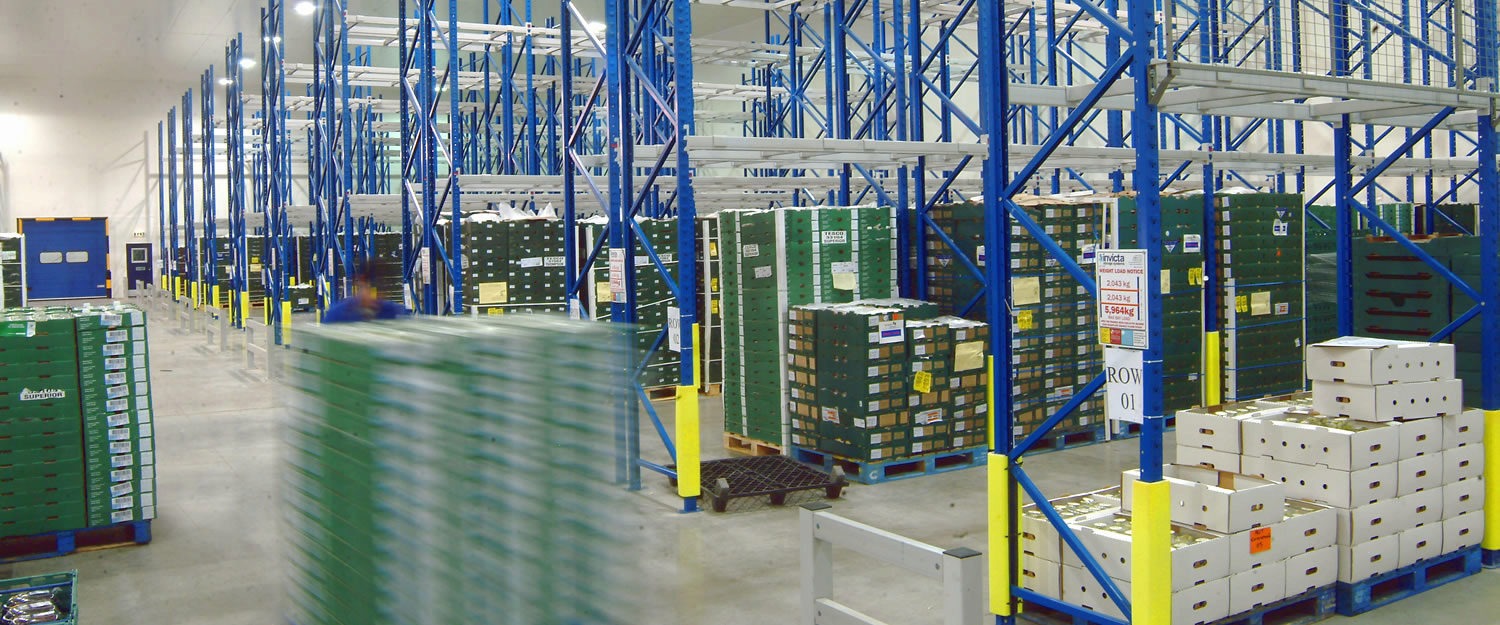For your information
You are being redirected to one of our divisional subsites which contains more detailed information on the required division. To navigate back to the main Invicta Group site, please click the link found in the footer at the bottom of the page.
How to improve warehouse employee retention
11th July 2023
Quick Quote
Contact Mick Coyne
To get a quotation or arrange a free site survey - Call Mick Coyne on
-
 UK
UK
Current location:
Quick Quote
Contact Mick Coyne
-
 UK
UK
Current location:
A report into the happiness of warehouse workers has laid bare a problem afflicting multiple industries. At a time when warehouse personnel are in increasingly high demand – and able to be selective about roles – 50% of them apparently feel undervalued by the business they work for. Yet while the ramifications are troubling, problems with employee retention aren’t impossible for businesses to solve.
Employees feeling undervalued may seem like it has an obvious solution, but addressing it properly requires a multifaceted approach. Warehouse owners need to prove that they value employees through tangible actions, and investing in them as people as well as resources. The resulting benefits can extend beyond just keeping employees for the long term, and into improvements in efficiency and safety.
The importance of employee retention
Retaining employees has never been more important for warehouse operators. A variety of political and economic issues have seen a shortfall in available employees for warehouse roles in the UK, creating a highly competitive market. Staffing a warehouse now means either presenting a package of benefits that will lure prospective employees away from competitors, or presenting roles to individuals who might not otherwise have considered working in the sector.
With the difficulty in filling roles, keeping the employees you already have is crucial. Yet as the aforementioned study indicates, employee satisfaction is low. Despite 60% of warehouse workers wanting to stay at their current place of work, far fewer of them feel that the work they do is appreciated. With the difficulties of the past few years for individuals and businesses, there seems to have been a breakdown somewhere in the work expected of people, and how much they are rewarded for it.
This is compounded by the costs and difficulties of the hiring process. While finding the right candidates for a warehouse operative role may be more straightforward than some more specialised roles, this doesn’t make it an easy or short process, particularly if multiple hires are required. Getting the right person for the job is key, and the process of onboarding – involving safety training, warehouse training and orientation – may be more difficult than other jobs with more stringent requirements.
Warehouse operators with poor employee retention also lose the value of veteran employees. The experience accrued by long-term employees both makes them more effective and efficient in their roles, and helps to influence other employees, particularly newer hires. Without experience in the warehouse, the process of onboarding is likely to be harder, and the quality of the work being performed may suffer. A lack of ‘old heads’ also reflects poorly on your ability to retain people, your culture, and how you treat employees.
How to retain warehouse employees
Retaining employees means showing them that they are valued, but this means more than just praising them for a job well done. To keep people at a company for a number of years, they need to feel not just that they belong, but that they have a realistic chance of progression, both in a professional capacity and on a personal level. Here are just a few of the ways businesses can look to retain warehouse employees:
Offer good value
Pay will always be the first thing on an employee’s mind, and never more so than the present day. A series of sharp increases in the cost of living mean that usual pay rises or bonuses are struggling to meet the costs imposed by inflation, and mean that many employees are suffering effective pay cuts, even when their salaries rise.
While perks are less important, they can offer the added value you need to compete with rival firms, and provide the sorts of benefits that people now commonly expect. Longer lunch breaks, rec rooms, generous holiday arrangements, sweet snacks and other perks can relieve the monotony and physical strain of manual work, and make it more palatable to a wider range of prospective employees.
Invest in training
Employees generally want to be good at their jobs, and to maximise their potential, whether that’s in their current role or another role within the business. Achieving this at a basic level means providing them with ample training opportunities, and affording them the opportunity to improve and grow. Going beyond legal requirements and offering courses in racking safety inspections or industrial vehicle operation will bolster their skills, and allow them to perform more roles within the workplace.
More advanced safety courses and management training meanwhile will allow them to progress up through the ranks, bringing their experience of working on the warehouse floor with them. While this may create new openings for warehouse operatives, the fact that there is a clear pathway through the company will speak volumes about how you treat junior employees, and give you a competitive advantage when recruiting.
Improve your warehouse design
Investing in a variety of warehouse improvements – both traditional and technological – can make things easier for warehouse operatives, and demonstrate that your business is forward-thinking. Using a modern warehouse management system (WMS), sensors, portable scanners and even autonomous vehicles can help to expedite the movement of goods, alleviate the physical burden on staff, and help new employees to navigate around the warehouse.
Racking design also has a substantial role to play here. A well-designed warehouse not only maximises the available storage space, but minimises the distances required to travel, organises goods in an easy-to-find layout, and optimises the flow of traffic around the warehouse. All of these factors make it easier and safer for operatives to perform their roles, reducing the risks of injury and fatigue, and their overall sense of happiness.
Enhance your workforce management
The pandemic has accelerated an ongoing shift to new patterns of work. While warehouses cannot be manned remotely – at least, not yet – employees in all industries now have an expectation that their employers will be as accommodating as possible. In warehousing and logistics, this is less about working from home and more about being flexible with shift patterns and holidays, granting people the time they need for holidays and personal reasons.
The use of workforce management software and other HR tools can help to better organise your workforce, and make it easier for employees to change their hours at relatively short notice. By employing some element of automation, you could also shift some of the burden of manual work, and even extend your working hours, allowing you to distribute shifts across a longer period of time. This kind of flexibility is not only a boon for employees, but puts you in good stead as the industry and wider world of work continue to move forwards.
–
Improving warehouse employee retention is a challenge for all warehousing and logistics firms, but not one without solutions. Solving it means investing in employees as a persistent resource for your business – something that should see a multitude of rewards down the line, both in their performance and the attractiveness of your business to new recruits. To learn more about our world-leading racking design, installation and safety training, browse our website or get in touch with us today.
Accreditations & Affiliations







Start your project
Tell us about your project. Please complete this form. One of our sales team will come back to you with more details. If you prefer, you can drop us an email.




Share/Like this page